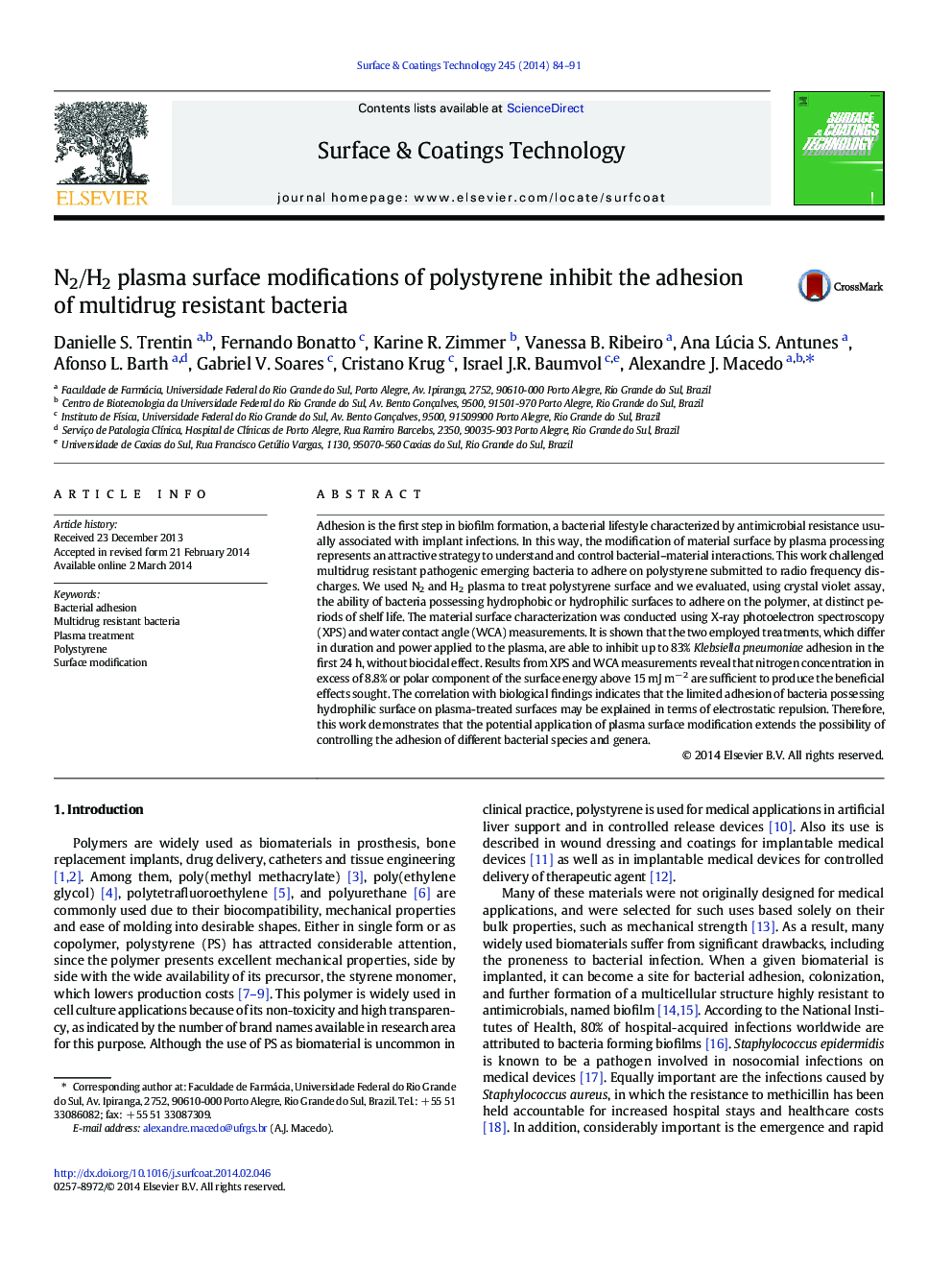| Article ID | Journal | Published Year | Pages | File Type |
|---|---|---|---|---|
| 8027927 | Surface and Coatings Technology | 2014 | 8 Pages |
Abstract
Adhesion is the first step in biofilm formation, a bacterial lifestyle characterized by antimicrobial resistance usually associated with implant infections. In this way, the modification of material surface by plasma processing represents an attractive strategy to understand and control bacterial-material interactions. This work challenged multidrug resistant pathogenic emerging bacteria to adhere on polystyrene submitted to radio frequency discharges. We used N2 and H2 plasma to treat polystyrene surface and we evaluated, using crystal violet assay, the ability of bacteria possessing hydrophobic or hydrophilic surfaces to adhere on the polymer, at distinct periods of shelf life. The material surface characterization was conducted using X-ray photoelectron spectroscopy (XPS) and water contact angle (WCA) measurements. It is shown that the two employed treatments, which differ in duration and power applied to the plasma, are able to inhibit up to 83% Klebsiella pneumoniae adhesion in the first 24 h, without biocidal effect. Results from XPS and WCA measurements reveal that nitrogen concentration in excess of 8.8% or polar component of the surface energy above 15 mJ mâ 2 are sufficient to produce the beneficial effects sought. The correlation with biological findings indicates that the limited adhesion of bacteria possessing hydrophilic surface on plasma-treated surfaces may be explained in terms of electrostatic repulsion. Therefore, this work demonstrates that the potential application of plasma surface modification extends the possibility of controlling the adhesion of different bacterial species and genera.
Keywords
Related Topics
Physical Sciences and Engineering
Materials Science
Nanotechnology
Authors
Danielle S. Trentin, Fernando Bonatto, Karine R. Zimmer, Vanessa B. Ribeiro, Ana Lúcia S. Antunes, Afonso L. Barth, Gabriel V. Soares, Cristano Krug, Israel J.R. Baumvol, Alexandre J. Macedo,
